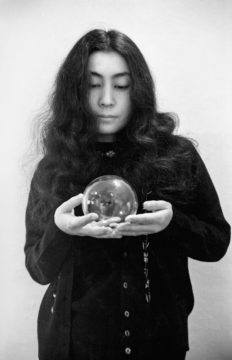Louis Menand in The New Yorker:
 On March 9, 1945, an armada of more than three hundred B-29s flew fifteen hundred miles across the Pacific to attack Tokyo from the air. The planes carried incendiary bombs to be dropped at low altitudes. Beginning shortly after midnight, sixteen hundred and sixty-five tons of bombs fell on the city.
On March 9, 1945, an armada of more than three hundred B-29s flew fifteen hundred miles across the Pacific to attack Tokyo from the air. The planes carried incendiary bombs to be dropped at low altitudes. Beginning shortly after midnight, sixteen hundred and sixty-five tons of bombs fell on the city.
Most of the buildings in Tokyo were constructed of wood, paper, and bamboo, and parts of the city were incinerated in a matter of hours. The planes targeted workers’ homes in the downtown area, with the goal of crippling Japan’s arms industry. It is estimated that a million people were left homeless and that as many as a hundred thousand were killed—more than had died in the notorious firebombing of Dresden, a month earlier, and more than would die in Nagasaki, five months later. Crewmen in the last planes in the formation said that they could smell burning flesh as they flew over Tokyo at five thousand feet. That night, Yoko Ono was in bed with a fever. While her mother and her little brother, Keisuke, spent the night in a bomb shelter under the garden of their house, she stayed in her room. She could see the city burning from her window. She had just turned twelve and had led a protected and privileged life. She was too innocent to be frightened.
The Ono family was wealthy. They had some thirty servants, and they lived in the Azabu district, near the Imperial Palace, away from the bombing. The fires did not reach them. But Ono’s mother, worried that there would be more attacks (there were), decided to evacuate to a farming village well outside the city. In the countryside, the family found itself in a situation faced by many Japanese: they were desperate for food. The children traded their possessions to get something to eat, and sometimes they went hungry. Ono later said that she and Keisuke would lie on their backs looking at the sky through an opening in the roof of the house where they lived. She would ask him what kind of dinner he wanted, and then tell him to imagine it in his mind. This seemed to make him happier. She later called it “maybe my first piece of art.”
More here.
